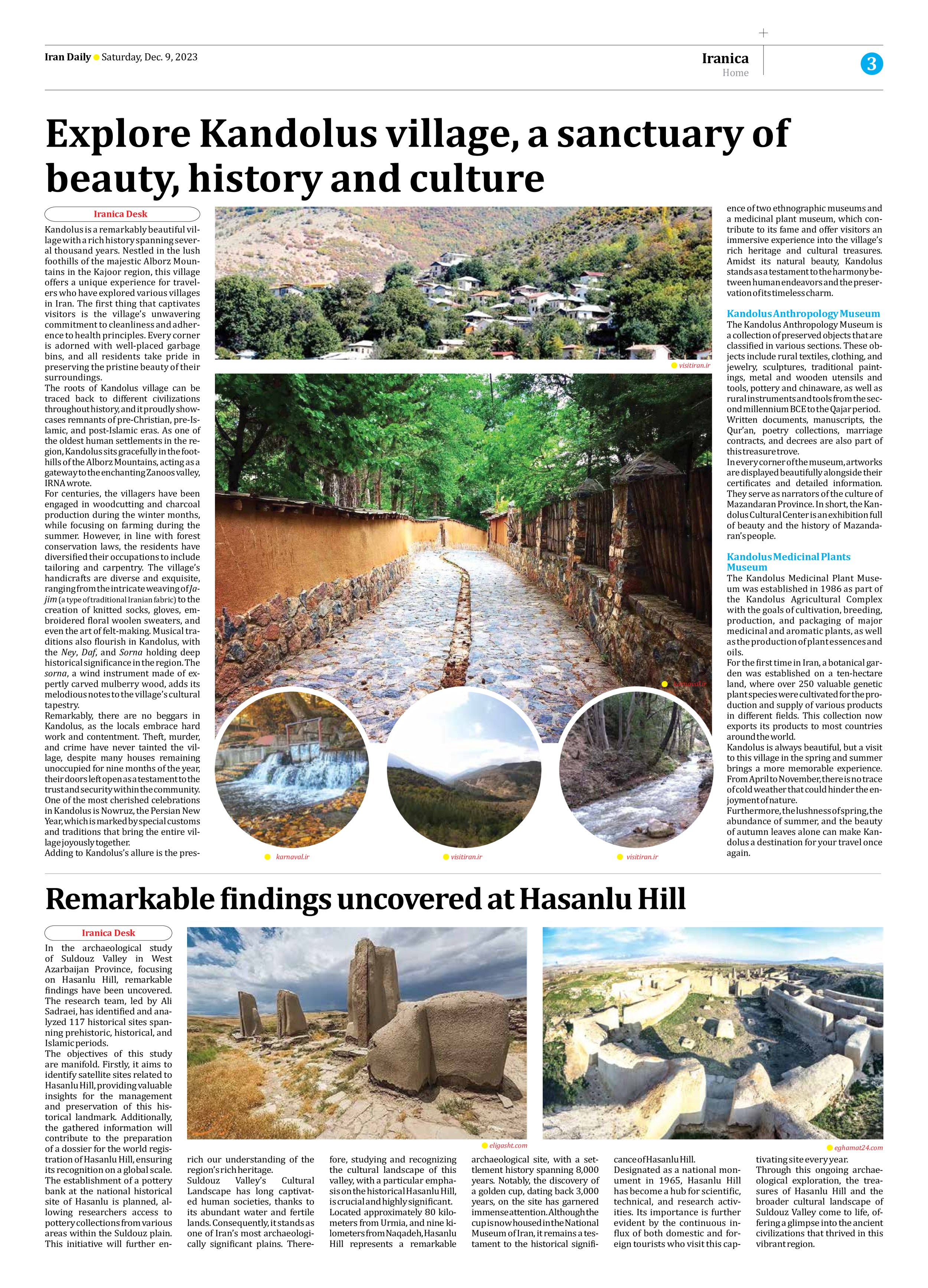
Explore Kandolus village, a sanctuary of beauty, history and culture
Kandolus is a remarkably beautiful village with a rich history spanning several thousand years. Nestled in the lush foothills of the majestic Alborz Mountains in the Kajoor region, this village offers a unique experience for travelers who have explored various villages in Iran. The first thing that captivates visitors is the village’s unwavering commitment to cleanliness and adherence to health principles. Every corner is adorned with well-placed garbage bins, and all residents take pride in preserving the pristine beauty of their surroundings.
The roots of Kandolus village can be traced back to different civilizations throughout history, and it proudly showcases remnants of pre-Christian, pre-Islamic, and post-Islamic eras. As one of the oldest human settlements in the region, Kandolus sits gracefully in the foothills of the Alborz Mountains, acting as a gateway to the enchanting Zanoos valley, IRNA wrote.
For centuries, the villagers have been engaged in woodcutting and charcoal production during the winter months, while focusing on farming during the summer. However, in line with forest conservation laws, the residents have diversified their occupations to include tailoring and carpentry. The village’s handicrafts are diverse and exquisite, ranging from the intricate weaving of Jajim (a type of traditional Iranian fabric) to the creation of knitted socks, gloves, embroidered floral woolen sweaters, and even the art of felt-making. Musical traditions also flourish in Kandolus, with the Ney, Daf, and Sorna holding deep historical significance in the region. The sorna, a wind instrument made of expertly carved mulberry wood, adds its melodious notes to the village’s cultural tapestry.
Remarkably, there are no beggars in Kandolus, as the locals embrace hard work and contentment. Theft, murder, and crime have never tainted the village, despite many houses remaining unoccupied for nine months of the year, their doors left open as a testament to the trust and security within the community. One of the most cherished celebrations in Kandolus is Nowruz, the Persian New Year, which is marked by special customs and traditions that bring the entire village joyously together.
Adding to Kandolus’s allure is the presence of two ethnographic museums and a medicinal plant museum, which contribute to its fame and offer visitors an immersive experience into the village’s rich heritage and cultural treasures. Amidst its natural beauty, Kandolus stands as a testament to the harmony between human endeavors and the preservation of its timeless charm.
Kandolus Anthropology Museum
The Kandolus Anthropology Museum is a collection of preserved objects that are classified in various sections. These objects include rural textiles, clothing, and jewelry, sculptures, traditional paintings, metal and wooden utensils and tools, pottery and chinaware, as well as rural instruments and tools from the second millennium BCE to the Qajar period.
Written documents, manuscripts, the Qur’an, poetry collections, marriage contracts, and decrees are also part of this treasure trove.
In every corner of the museum, artworks are displayed beautifully alongside their certificates and detailed information. They serve as narrators of the culture of Mazandaran Province. In short, the Kandolus Cultural Center is an exhibition full of beauty and the history of Mazandaran’s people.
Kandolus Medicinal Plants Museum
The Kandolus Medicinal Plant Museum was established in 1986 as part of the Kandolus Agricultural Complex with the goals of cultivation, breeding, production, and packaging of major medicinal and aromatic plants, as well as the production of plant essences and oils.
For the first time in Iran, a botanical garden was established on a ten-hectare land, where over 250 valuable genetic plant species were cultivated for the production and supply of various products in different fields. This collection now exports its products to most countries around the world.
Kandolus is always beautiful, but a visit to this village in the spring and summer brings a more memorable experience. From April to November, there is no trace of cold weather that could hinder the enjoyment of nature.
Furthermore, the lushness of spring, the abundance of summer, and the beauty of autumn leaves alone can make Kandolus a destination for your travel once again.







